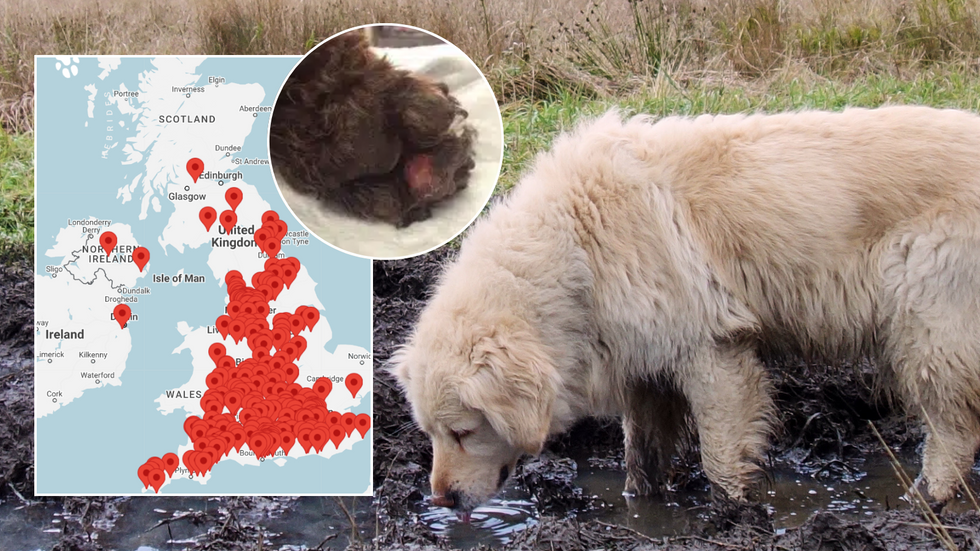Alabama Rot has claimed the lives of 10 dogs this year in the UK
Don't Miss
Most Read
Trending on GB News
An incurable deadly flesh-eating dog disease is spreading throughout the UK, with 10 cases already being recorded this year.
Alabama Rot, a "very rare" condition which can cause kidney failure, has led to the deaths of 318 dogs in the UK since 2012.
What causes the incurable disease, also known as CRGV (cutaneous and renal glomerular vasculopathy), is currently unknown.
Vets at Anderson Moores, a specialist clinic, believe it could be a bacteria or a toxin.

A map of all the cases in the UK of Alabama Rot, an incurable flesh-eating disease
Getty/Vets4Pets/Anderson Moores Veterinary Specialists
WARNING - SENSITIVE CONTENT IS SHOWN BELOW WHICH SOME READERS MAY FIND DISTRESSING
Dogs with Alabama Rot can develop painful sores on their paws and legs which can damage the blood vessels in the skin.
The disease is sadly often fatal, with just a 10 per cent chance of those contracting the infection surviving.
Owners are being advised to wash the mud off of their dogs’ legs, tummies and paws after they have been for a walk.
They should also be vigilant to skin lesions.
LATEST DEVELOPMENTS:

Vets at Anderson Moores believe it could be caused a bacteria or a toxin
Anderson Moores Veterinary Specialists
The Royal Veterinary College (RVC) said that dogs with Alabama Rot may develop ulcers on their legs or paws, as well as their head, muzzle, tongue, flank and belly.
The ulcers vary in severity and could just look like a cut, bruise or sting, however, the RVC stresses that most skin ulcers will not be caused by Alabama rot.
Joshua Walker, a vet at Anderson Moores, said: "We know the disease is associated with increasing rainfall and increasing temperatures in the autumn.
"It might be that the very wet, slightly warmer November has led to a surge in cases - it's important for everyone to be aware of the signs."

Dogs with Alabama Rot can develop painful sores on their paws and legs which can damage the blood vessels in the skin.
Anderson Moores Veterinary Specialists
The disease is more common in the winter and spring and in dogs who walk in muddy, woodland areas.
It first came to light in the US in the 1980s.
It affects only dogs, with no other animals impacted by it. Humans are also immune.
Alabama Rot was initially believed to only affect greyhounds, however now any dog can get it.
However, it is not contagious so cannot be spread from one dog to another.









